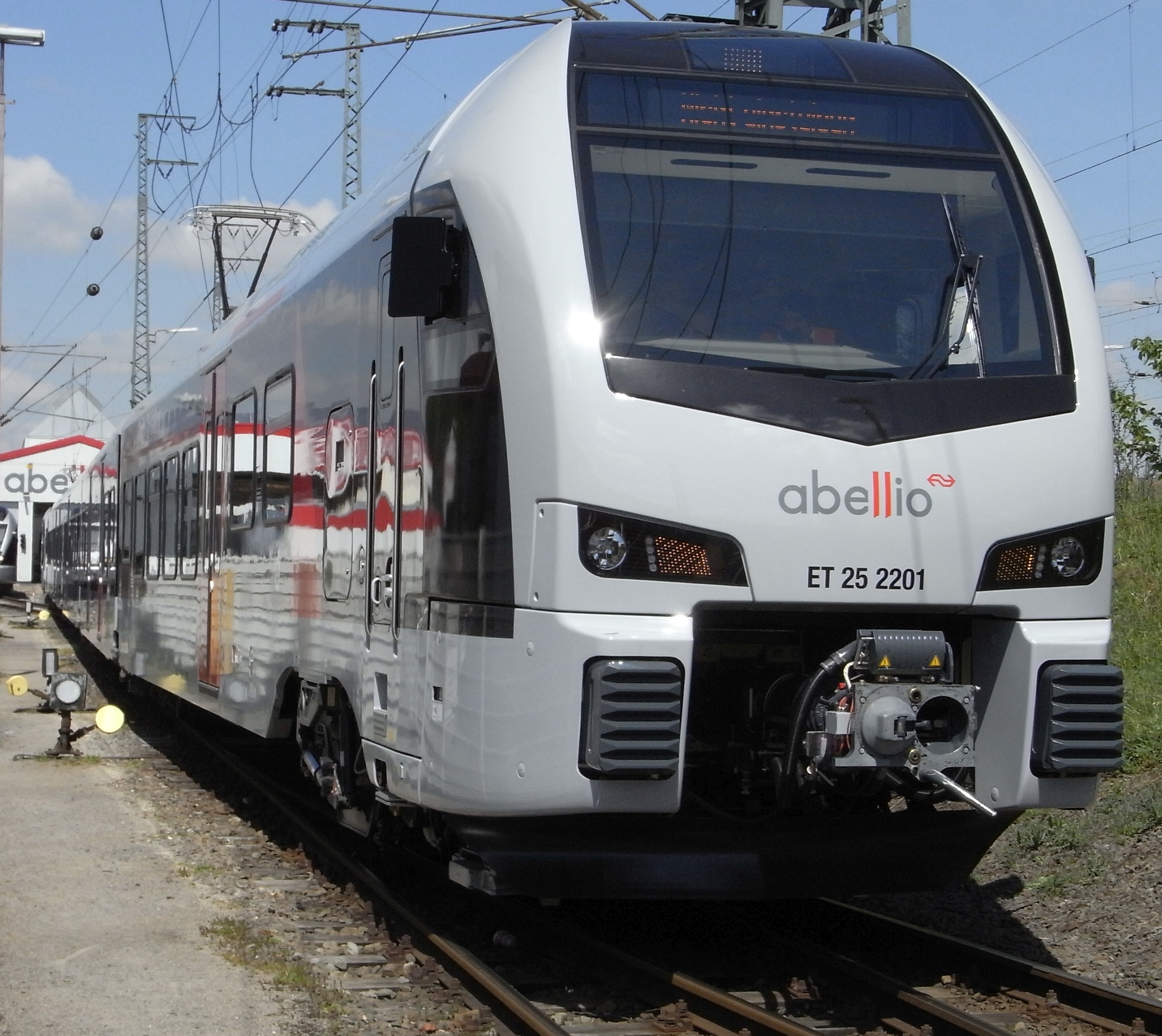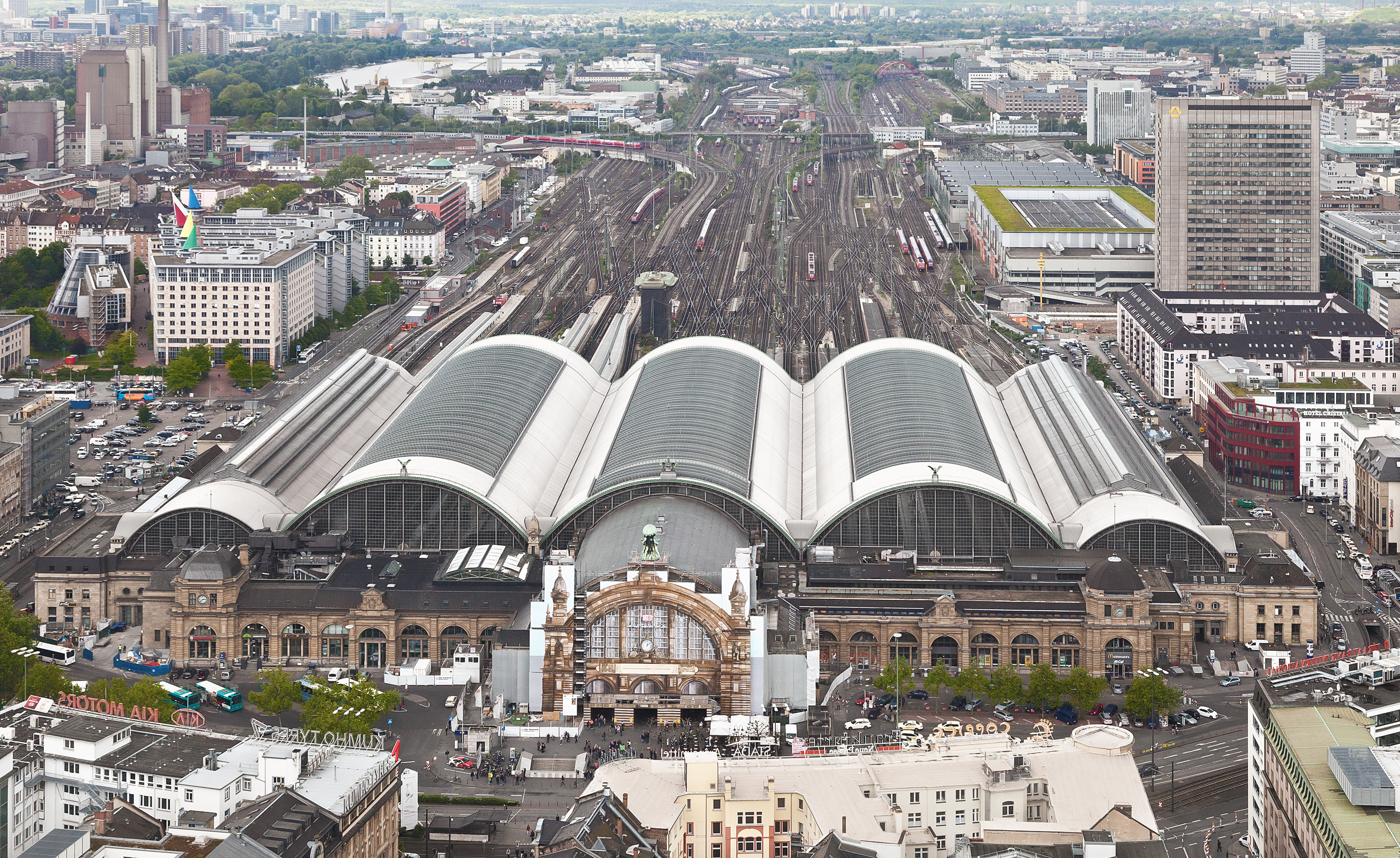|
Essen-Bergeborbeck Station
Essen-Bergeborbeck station is located in the city of Essen in the German state of North Rhine-Westphalia on the Duisburg–Dortmund railway of the Cologne-Minden Railway Company. The line and station opened on 15 May 1847. It is classified by Deutsche Bahn as a category 6 station. Though it is named after nearby Bergeborbeck borough, it is located within the boundaries of Bochold, Essen. The station is served by Regionalbahn services RB 32 ( Rhein-Emscher-Bahn) and RB 35 (Emscher-Niederrhein-Bahn), providing a service every 30 minutes during the day on weekdays. It is also served by tram lines 101 and 106 of the Essen Stadtbahn, operated at 10-minute intervals and bus route 196, operated by Ruhrbahn at 20-minute intervals. Notes Rhine-Ruhr S-Bahn stations S2 (Rhine-Ruhr S-Bahn) Bergeborbeck Bergeborbeck is a northern borough of the city of Essen, Germany, with a population of around 4,400. It was incorporated into the city in 1915, having previously been part of the ... [...More Info...] [...Related Items...] OR: [Wikipedia] [Google] [Baidu] |
Essen
Essen (; Latin: ''Assindia'') is the central and, after Dortmund, second-largest city of the Ruhr, the largest urban area in Germany. Its population of makes it the fourth-largest city of North Rhine-Westphalia after Cologne, Düsseldorf and Dortmund, as well as the ninth-largest city of Germany. Essen lies in the larger Rhine-Ruhr Metropolitan Region and is part of the cultural area of Rhineland. Because of its central location in the Ruhr, Essen is often regarded as the Ruhr's "secret capital". Two rivers flow through the city: in the north, the Emscher, the Ruhr area's central river, and in the south, the Ruhr River, which is dammed in Essen to form the Lake Baldeney (''Baldeneysee'') and Lake Kettwig (''Kettwiger See'') reservoirs. The central and northern boroughs of Essen historically belong to the Low German ( Westphalian) language area, and the south of the city to the Low Franconian ( Bergish) area (closely related to Dutch). Essen is seat to several of the region's ... [...More Info...] [...Related Items...] OR: [Wikipedia] [Google] [Baidu] |
Bochold
Bochold is a northwestern borough of the city of Essen, Germany. It was incorporated into the city in 1915. Before it had been part of the Bürgermeisterei Borbeck (''Borbeck district''). WAZ.de Around 18,200 people live here. S-Bahn trains have a stop at Bergeborbeck station, which is located in the Bochold borough. It should not be mixed up with the city of Bocholt, to the northwest. Geography Bochold borders the boroughs of |
Railway Stations In Essen
Rail transport (also known as train transport) is a means of transport that transfers passengers and goods on wheeled vehicles running on rails, which are incorporated in tracks. In contrast to road transport, where the vehicles run on a prepared flat surface, rail vehicles (rolling stock) are directionally guided by the tracks on which they run. Tracks usually consist of steel rails, installed on sleepers (ties) set in ballast, on which the rolling stock, usually fitted with metal wheels, moves. Other variations are also possible, such as "slab track", in which the rails are fastened to a concrete foundation resting on a prepared subsurface. Rolling stock in a rail transport system generally encounters lower frictional resistance than rubber-tyred road vehicles, so passenger and freight cars (carriages and wagons) can be coupled into longer trains. The operation is carried out by a railway company, providing transport between train stations or freight customer faciliti ... [...More Info...] [...Related Items...] OR: [Wikipedia] [Google] [Baidu] |
S2 (Rhine-Ruhr S-Bahn)
Line S2 is a S-Bahn line in the Rhein-Ruhr network. It starts in Dortmund Hauptbahnhof and runs westerly. During weekdays one service per hour runs each to Essen Hauptbahnhof and Recklinghausen Hauptbahnhof using Stadler FLIRT 3XL units. Line S2 runs over lines built by various railway companies: * from Dortmund Hauptbahnhof to Dortmund-Dorstfeld over the Witten/Dortmund–Oberhausen/Duisburg railway, opened by the Bergisch-Märkische Railway Company in 1862 * from Dortmund-Dorstfeld to Dortmund-Mengede over the Welver–Sterkrade railway, built by the Royal Westphalian Railway Company on 1 September 1878. *from Dortmund-Mengede to Gelsenkirchen Hauptbahnhof via Herne station over the Duisburg–Dortmund Railway opened by the Cologne-Minden Railway Company in 1847, *from Gelsenkirchen to Essen over the Essen–Gelsenkirchen railway, opened from Gelsenkirchen to Essen-Kray Nord by the Rhenish Railway Company in 1872 and from Essen-Kray Nord to Essen Hauptbahnhof by the Prussi ... [...More Info...] [...Related Items...] OR: [Wikipedia] [Google] [Baidu] |
Rhine-Ruhr S-Bahn Stations
The Rhine-Ruhr metropolitan region (german: Metropolregion Rhein-Ruhr) is the largest metropolitan region in Germany, with over ten million inhabitants. A polycentric conurbation with several major urban concentrations, the region covers an area of , entirely within the federal state of North Rhine-Westphalia. The Rhine-Ruhr metropolitan region spreads from the Ruhr area (Dortmund-Essen-Duisburg-Bochum) in the north to the urban areas of the cities of Mönchengladbach, Düsseldorf (the state capital), Wuppertal, Leverkusen, Cologne (the region's largest and Germany's fourth largest city), and Bonn in the south. The location of the Rhine-Ruhr at the heart of the European Blue Banana makes it well connected to other major European cities and metropolitan areas such as the Randstad, the Flemish Diamond and the Frankfurt Rhine Main Region. The metropolitan area is named after the Rhine and Ruhr rivers, which are the region's defining geographical features and historically its ... [...More Info...] [...Related Items...] OR: [Wikipedia] [Google] [Baidu] |
Essen Stadtbahn
The Essen Stadtbahn (german: Stadtbahn Essen) is a light rail (Stadtbahn) network in Essen and the two neighbouring towns of Mülheim an der Ruhr and Gelsenkirchen in the German state of North Rhine Westphalia. It forms part of the Rhine-Ruhr Stadtbahn. Like the Frankfurt U-Bahn, it is a mixed system of light rail and underground railway. One of its three lines, U18, runs completely free of intersections with other traffic. The other two lines are partly tramlines and partly underground lines. The sections of tramline have only a few sections that have no intersections with road traffic. Like all urban public transport in Essen, the Essen Stadtbahn is operated by ''Ruhrbahn'', a company owned by the Cities of Essen and Mülheim an der Ruhr. The transport companies of neighbouring municipalities are also involved with the operation of some lines under concessions. Operations The Essen Stadtbahn includes three standard gauge lines: U11, U17 and U18. The Essen tram netw ... [...More Info...] [...Related Items...] OR: [Wikipedia] [Google] [Baidu] |
Emscher-Niederrhein-Bahn
The Emscher-Niederrhein-Bahn (RB 35) is a Regionalbahn service in the German state of North Rhine-Westphalia. It runs hourly between Gelsenkirchen and Duisburg with Mönchengladbach. Its name refers to the Emscher river (which runs near Duisburg and Gelsenkirchen) and the Lower Rhine (which the service crosses between Duisburg-Hochfeld Süd and Rheinhausen-Ost). History Before 2016, there was already a service numbered as RB 35, operating under the name of ''Der Weseler''. It ran mainly between Wesel and Duisburg Hbf and was extended during the peak hour from Duisburg to Düsseldorf and once a day to Cologne, as well as from Wesel to Emmerich and it thus functioned to relieve the Rhein-Express (RE 5). From the timetable change of 2016, the route was extended beyond Duisburg to Mönchengladbach, which complemented the northern section of the Rhein-Niers-Bahn. The RE 5 was shortened to run on the Wesel–Duisburg–Düsseldorf–Köln–Bonn–Koblenz sectio ... [...More Info...] [...Related Items...] OR: [Wikipedia] [Google] [Baidu] |
Bergeborbeck
Bergeborbeck is a northern borough of the city of Essen, Germany, with a population of around 4,400. It was incorporated into the city in 1915, having previously been part of the Bürgermeisterei Borbeck (''Borbeck district''). S-Bahn trains have a stop at Bergeborbeck station, which is named after the borough, but located within the boundaries of nearby Bochold. The football stadium of Georg-Melches-Stadion was located in Bergeborbeck before it was demolished and replaced by nearby Stadion Essen in 2012. Frankfurter Allgemeine Geography Bergeborbeck borders the boroughs of Vogelheim to the east,[...More Info...] [...Related Items...] OR: [Wikipedia] [Google] [Baidu] |
North Rhine-Westphalia
North Rhine-Westphalia (german: Nordrhein-Westfalen, ; li, Noordrien-Wesfale ; nds, Noordrhien-Westfalen; ksh, Noodrhing-Wäßßfaale), commonly shortened to NRW (), is a States of Germany, state (''Land'') in Western Germany. With more than 18 million inhabitants, it is the List of German states by population, most populous state of Germany. Apart from the city-states, it is also the List of German states by population density, most densely populated state in Germany. Covering an area of , it is the List of German states by area, fourth-largest German state by size. North Rhine-Westphalia features 30 of the 81 German municipalities with over 100,000 inhabitants, including Cologne (over 1 million), the state capital Düsseldorf, Dortmund and Essen (all about 600,000 inhabitants) and other cities predominantly located in the Rhine-Ruhr metropolitan area, the largest urban area in Germany and the fourth-largest on the European continent. The location of the Rhine-Ruhr at the h ... [...More Info...] [...Related Items...] OR: [Wikipedia] [Google] [Baidu] |
German Railway Station Categories
The approximately 5,400 railway stations in Germany that are owned and operated by the Deutsche Bahn subsidiary DB Station&Service are divided into seven categories, denoting the service level available at the station. This categorisation influences the amount of money railway companies need to pay to DB Station&Service for using the facilities at the stations. Categories Category 1 The 21 stations in Category 1 are considered traffic hubs. They are permanently staffed and carry all sorts of railway-related facilities, as well as usually featuring a shopping mall in the station. Most of these stations are the central (commonly referred to as main) stations (''Hauptbahnhof'' or ''Hbf'') of large cities with 500,000 inhabitants and above, though some in smaller cities, such as Karlsruhe Hauptbahnhof, are regarded as important because they are at the junction of important railway lines. Berlin, Hamburg, Munich and Cologne, the four biggest cities in Germany, have more than ... [...More Info...] [...Related Items...] OR: [Wikipedia] [Google] [Baidu] |






.jpg)
